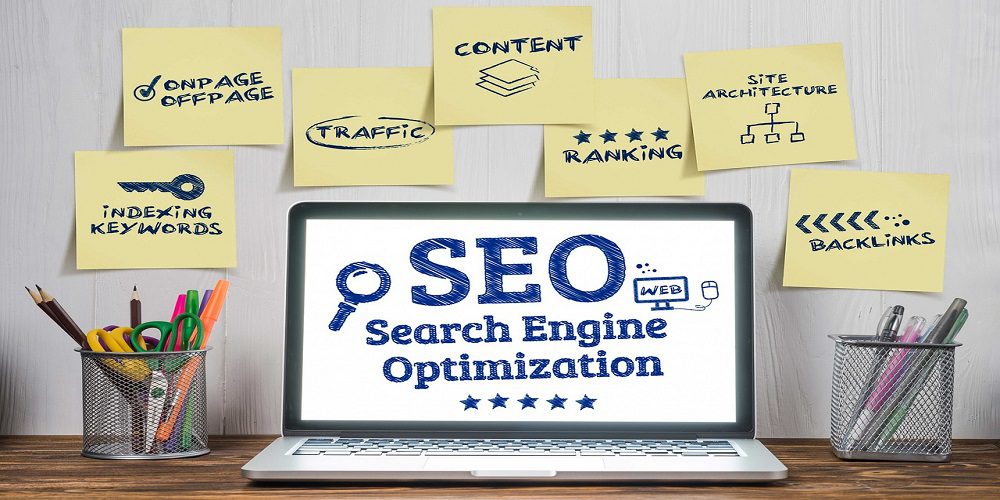Introduction
In the dynamic world of business, effective sales techniques play a pivotal role in driving revenue and fostering long-term customer relationships. As markets evolve, so do the strategies employed by sales professionals. In this comprehensive guide, we will delve into various sales techniques that empower businesses to connect with their audience, boost conversions, and ultimately thrive in the competitive landscape.
Understanding the Sales Process
Before exploring specific sales techniques, it’s crucial to grasp the fundamental stages of the sales process. Typically, the sales journey consists of the following steps:
1. Prospecting: identifying potential customers who may be interested in your product or service.
2. Preparation: researching and understanding the needs, pain points, and preferences of your prospects.
3. Approach: initiating contact with prospects and establishing a connection.
4. Presentation: showcasing your product or service and highlighting its value proposition.
5. Handling Objections: Addressing concerns and objections raised by prospects.
6. Closing: Successfully obtaining a commitment from the prospect to purchase.
7. Follow-up: maintaining post-sale communication and ensuring customer satisfaction.
Different sales techniques
Now, let’s explore a variety of sales techniques that can be tailored to different stages of the sales process.
1. Consultative Selling:
Consultative selling is a customer-focused approach that prioritizes building relationships and understanding the unique needs of each prospect. Rather than immediately pitching a product or service, sales professionals employing this technique engage in a dialogue with potential customers. They use open-ended questions to uncover challenges, goals, and pain points, allowing them to tailor their offerings to precisely meet the customer’s requirements. The emphasis is on collaboration and providing value through personalized solutions.
Key Elements:
a. Relationship-building: Establishing trust and rapport with the customer by actively listening and demonstrating empathy.
b. Needs assessment: Thoroughly understanding the customer’s business, challenges, and goals through effective questioning.
c. Customized solutions: tailoring the sales pitch to address specific pain points and offering solutions that align with the customer’s objectives.
2. Social selling:
Social selling leverages social media platforms to connect with prospects, build relationships, and establish credibility. In a digitally connected world, sales professionals use platforms like LinkedIn, Twitter, and Facebook to engage with potential customers authentically. By sharing relevant content, participating in industry discussions, and connecting with target audiences, social selling helps create a strong online presence and positions salespeople as knowledgeable and approachable experts.
Key Elements:
a. Building a personal brand: developing a professional and authentic online presence that aligns with the salesperson’s expertise.
b. Engagement and interaction: actively participating in conversations, responding to comments, and sharing valuable content to stay top-of-mind.
c. Relationship building: Establishing connections on social media that can evolve into meaningful business relationships.
3. Solution Selling:
Solution selling revolves around identifying and addressing the specific problems and challenges faced by customers. Instead of solely focusing on the features of a product or service, sales professionals employing this technique emphasize how their offerings provide solutions to the customer’s pain points. This approach requires a deep understanding of the prospect’s business and the ability to position the product or service as a strategic solution that adds measurable value.
Key Elements:
a. Problem identification: probing to uncover the customer’s challenges and pain points.
b. Value proposition: clearly articulating how the offered solution directly addresses the identified problems.
c. Consultative approach: collaborating with the customer to co-create a solution that fits their unique needs.
4. Challenger Sales Model:
The Challenger Sales Model challenges the status quo by providing customers with new insights and perspectives. Sales professionals following this model take an assertive and proactive approach, pushing customers to reevaluate their current strategies and consider alternative solutions. This technique is particularly effective in situations where customers might not be fully aware of their own needs or where the salesperson can bring a fresh perspective to the table.
Key Elements:
a. Thought leadership: demonstrating expertise and providing valuable insights that challenge the customer’s existing beliefs.
b. Constructive tension: engaging in meaningful discussions that create a healthy tension, encouraging the customer to think critically about their current approach.
c. Tailored messaging: adapting the message to challenge the specific assumptions or misconceptions relevant to the prospect.
5. Inbound Selling:
Inbound selling is a methodology that focuses on attracting leads through content marketing, SEO, and other non-intrusive methods. The goal is to create valuable and relevant content that draws potential customers in, positioning the business as an authoritative source in its industry. By aligning marketing efforts with the interests and needs of the target audience, inbound selling generates qualified leads that are more likely to convert.
Key Elements:
a. Content creation: developing high-quality content such as blog posts, articles, videos, and ebooks that resonate with the target audience.
b. SEO optimization: ensuring that content is easily discoverable through search engines, increasing organic traffic.
Lead nurturing: implementing strategies to convert inbound leads into customers through targeted and personalized communication.
6. Outbound Selling:
Contrary to inbound selling, outbound selling involves proactive outreach to potential customers. This can include activities such as cold calling, sending targeted emails, and engaging in direct outreach through various channels. Outbound selling requires a strategic and personalized approach to capture the attention of prospects and initiate meaningful conversations.
Key Elements:
a. Targeted outreach: identifying and reaching out to prospects based on specific criteria and characteristics.
b. Personalization: tailoring communication to the individual prospect, demonstrating a genuine interest in their needs.
c. Follow-up: Implementing a systematic follow-up process to nurture leads and move them through the sales funnel.
7. Storytelling in Sales:
Storytelling is a powerful sales technique that involves using narratives to make the sales pitch more engaging and memorable. Instead of relying solely on facts and figures, sales professionals weave stories that resonate with the emotions and experiences of the prospect. Storytelling creates a connection between the customer and the product or service, making the sales pitch more relatable and compelling.
Key Elements:
a. Emotional connection: evoking emotions that resonate with the prospect, creating a memorable and impactful experience.
b. Relevance: crafting stories that align with the prospect’s challenges, making the narrative more relatable.
c. Illustrating benefits: using stories to illustrate how the product or service has positively impacted others, emphasizing its value.
8. Feature-Benefit Selling:
Feature-benefit selling involves highlighting the features of a product or service and clearly articulating how these features translate into specific benefits for the customer. This technique is effective in situations where prospects are more interested in understanding the practical advantages of a solution rather than engaging in a more in-depth, consultative sales process.
Key Elements:
a. Feature explanation: clearly presenting the features of the product or service.
b. Benefit articulation: linking each feature to the corresponding benefit for the customer.
c. Value demonstration: showing how the product’s features directly address the customer’s needs and pain points.
9. Cross-selling and upselling:
Cross-selling and upselling are strategies aimed at increasing the average transaction value by suggesting additional products or services. Cross-selling involves recommending related or complementary items, while upselling involves encouraging the customer to purchase a higher-priced version or additional features. These techniques leverage the customer’s existing interest and trust to expand the scope of the transaction.
Key Elements:
a. Strategic recommendations: suggesting additional products or services that enhance the customer’s overall experience.
b. Value proposition: communicating the added value of the suggested upgrades or complementary items.
c. Customer understanding: Leveraging insights into the customer’s preferences and needs to make relevant recommendations.
10. Neuro-Linguistic Programming (NLP) in Sales:
Neuro-Linguistic Programming (NLP) is a psychological approach that involves understanding and influencing human behavior through language and communication techniques. In sales, NLP can be used to build rapport, establish trust, and align with the prospect’s communication style. It emphasizes the importance of non-verbal cues, language patterns, and sensory preferences to create a more effective and persuasive communication strategy.
Key Elements:
a. Mirroring and matching: aligning with the prospect’s body language, speech patterns, and communication style.
b. Language patterns: using language that resonates with the prospect’s preferences and mindset.
c. Building rapport: Establishing a connection by demonstrating understanding and empathy through effective communication.
Integrating Technology into Sales
The digital era has brought forth an array of technologies that enhance sales processes. Here are some ways technology can be integrated:
1. Customer Relationship Management (CRM) Systems:
a. Organizes and centralizes customer data.
b. Facilitates personalized communication and efficient follow-ups.
2. Sales Automation:
a. Streamline repetitive tasks such as email campaigns and lead scoring.
b. Improves efficiency and allows sales teams to focus on high-value activities.
3. Artificial Intelligence (AI) in Sales:
a. Analyzes data to predict customer behavior.
b. It enables personalized recommendations and enhances decision-making.
4. Video Conferencing and Virtual Demos:
a. Overcomes geographical barriers and allows for interactive product demonstrations.
b. Enhances the visual aspect of sales presentations.
Conclusion
Mastering the art of sales involves a nuanced understanding of various techniques and their strategic application throughout the sales process. By combining traditional methods with modern technologies, businesses can create a powerful sales strategy that resonates with today’s diverse and discerning consumers. Whether you’re a seasoned sales professional or a business owner looking to boost revenue, adopting a multifaceted approach to sales can significantly contribute to your success in the ever-evolving marketplace.

































